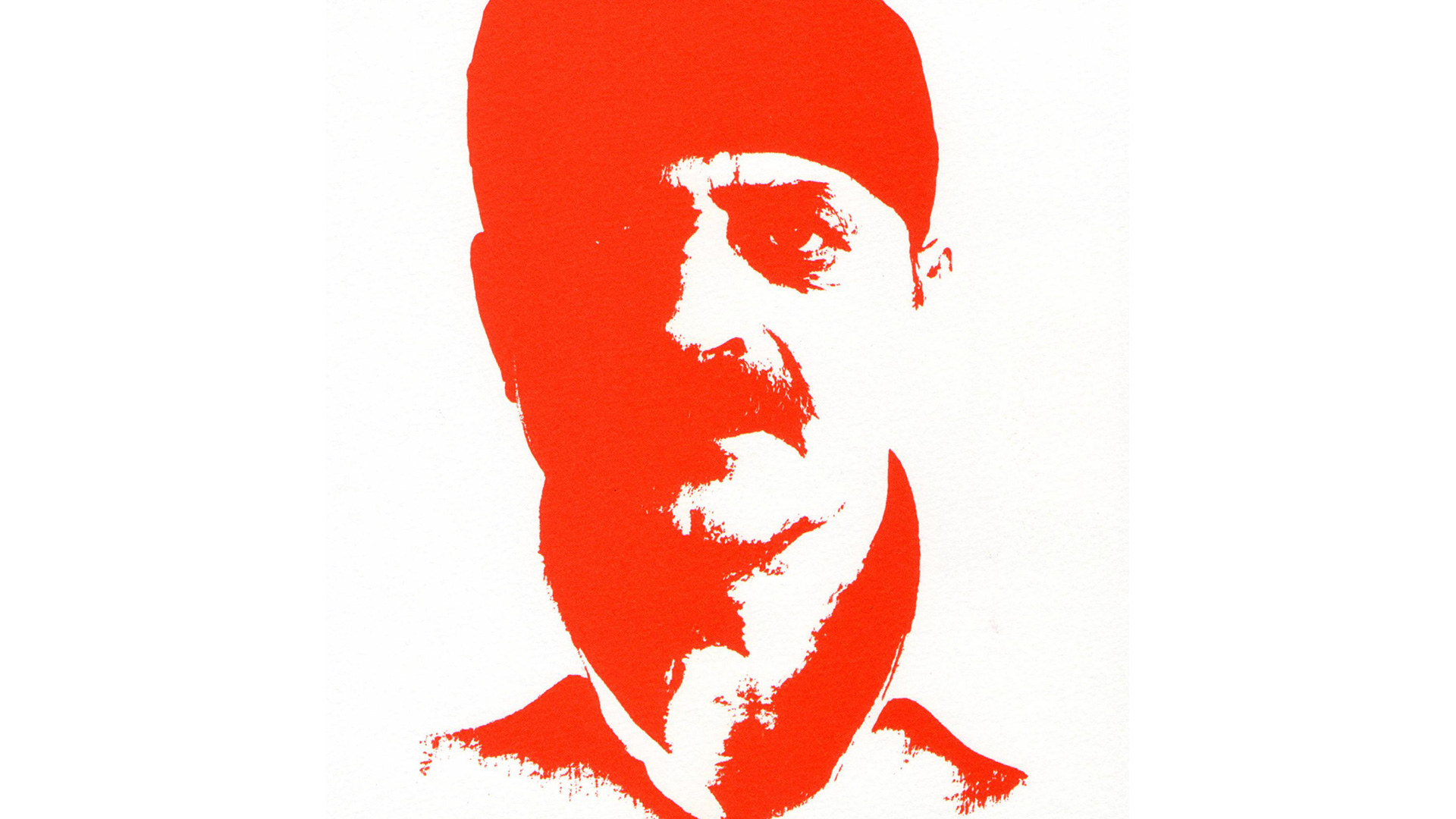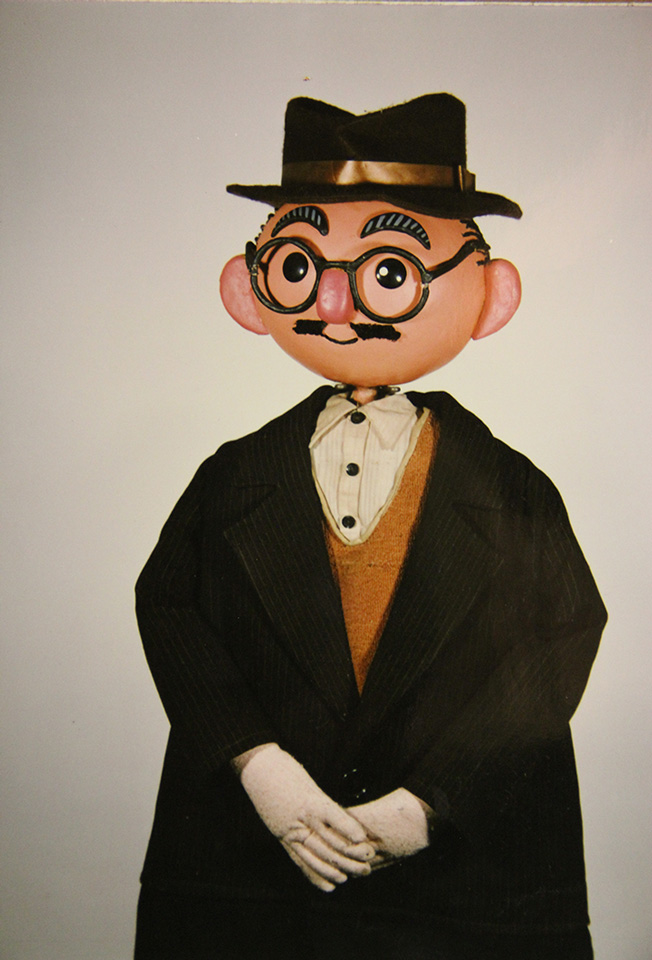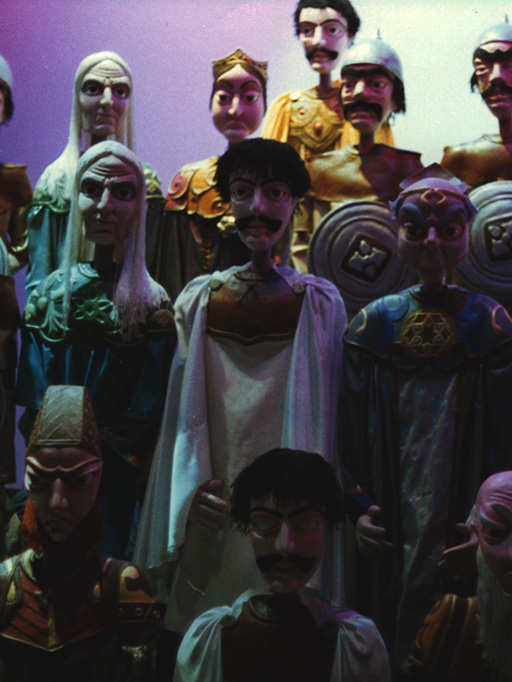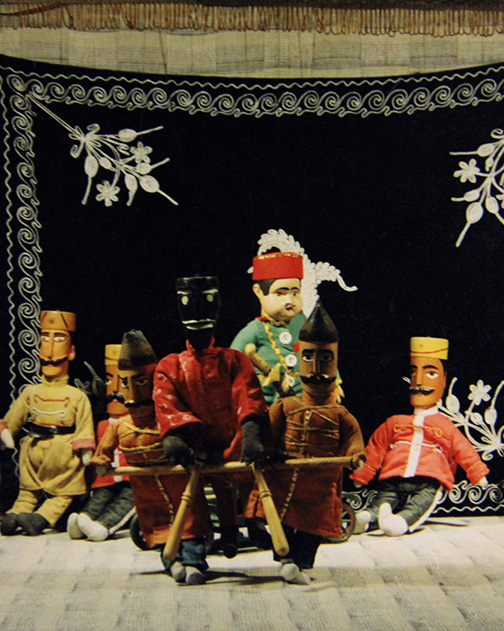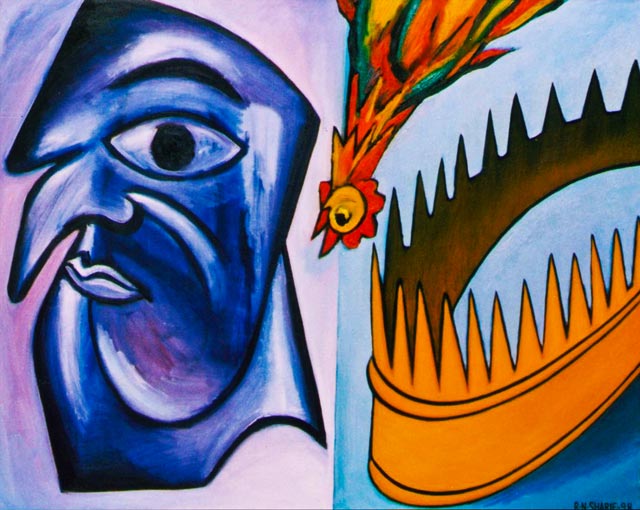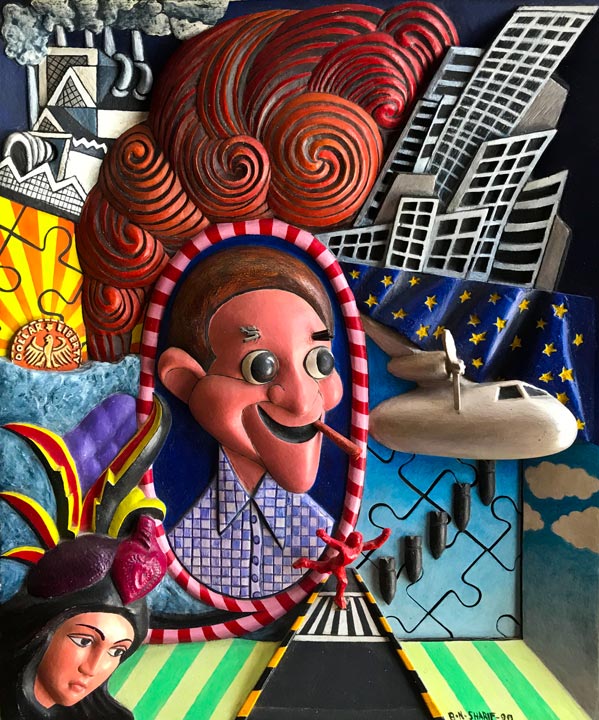
From the beginning, sculptures have been built in two ways. Painted or unpainted. The earliest sculptures were idols. In ancient Egypt, the sculptures found in tombs had all been painted or colored. The ones built in the open air were left natural. The earlier statues of Jesus were all painted and decorated with color. There are many sculptures of Hindu gods that are painted. But the sculptures of Buddha outside temples were made of stone and left unpainted. Those inside temples were usually painted in gold leaf.
In Greece, sculptures are of stone and unpainted. In Rome they were of stone or bronze and unpainted. In Iran, smaller sculptures were left unpainted whether bronze or stone. Also in Persepolis, the bas-reliefs and column bases were unpainted. Henry Moore did not color his sculptures. But Calder has no sculptures that were not painted. On the large bas-reliefs on the cliffs around Kermanshah, color was not used, but when the Ghajars added their Shah’s beneath these ancient bas-reliefs, they used color and painted them.
Bijan Sharif is the first of the contemporary Iranian sculptors to add color to his sculptures. Color was necessary for the puppets he created for puppet theater and their puppeteers. He began to increase the sizes and turned to toward the abstract, a natural evolution for this puppetry.
The sculptures of puppets that the artist created during his time alone were not made-to-order or even proper for puppet theater. Antlers, holders for plants or birds that were the champions of his own isolated world.
Color is an integral and inseparable part of Bijan Sharif’s work. If you remove the color from any of his work, they seem unfinished.
Color adds texture to his work. A texture that add a new life to his work. In my opinion, it is the color itself that gives them this new life. Sculptures that are completely stone or bronze are like spirits. But by painting them, we can add a this-worldly life to the sculptures. Sculptures that are unpainted, even though they are completed, but we could say they are in a way dazed or confused. In this type of sculpture, there is definitely something secretive and mysterious, as if it were protecting more than revealing. It is as if it contains a secret that has not been discovered. As if it has something to say that it hasn’t said. But a painted sculpture is telling you almost all of what it has to say.
They still contain a secret that plays a major role, yet it has a seemingly open appearance. The colors in Sharif’s work are simple and plain. The same as the uncomplicated form. It is as if one is attempting to create a sculpture with the minimum of form and color. Yet this simplicity does not lessen the richness, it just expresses it more simply. The collection of Sharif’s work in one place, is eye-catching and adds a wonderment and joy.
Yet the sculptor himself is missing.
May his soul be joyful.
Farshid Mesghali
December, 2017
